#gps utility mapping
Explore tagged Tumblr posts
Text

Construction, excavation, and utility work require precision! Our GPS utility mapping technology helps you detect, track, and map underground utilities with accuracy. Trust On The Mark Locaters for your next project! Let me know if you'd like any adjustments!
0 notes
Text




Yasushi Takahashi abandoned his girlfriend and quit his job to go on a 6-month journey throughout Japan, aiming to create a grand marriage proposal. Equipped with a GPS, Yasushi traveled 7163 km (4450 miles) mostly on foot but occasionally utilizing a car, ferry, and bicycle.
When he came home, he transferred the data to Google Maps, revealing the outcome as the words “marry me.” This has earned him a certification from Guinness World Records as the largest GPS drawing globally.
47 notes
·
View notes
Text
Hiking
Before you even go hiking, here’s some ways to prepare:
Start hydrating three days before your hike. Trust me, you’ll feel much better the day of.
Trim your toenails so you don’t bash them against the inside of your boot, that shit hurts.
Essentials for your daypack:
More water than you think you’ll need.
Snacks! Lots of snacks! A good mixture of protein and carbs will keep you energized and satiated.
Navigation tools. Don’t rely on a phone; some places won’t have service. I recommend learning to utilize a compass and a map or investing in a satellite GPS.
Lighters and/or matches.
Headlamp or flashlight with extra batteries.
Sun protection, either in the form of a hat and/or sunscreen.
Layers for different weather scenarios.
First aid kit. Definitely bandaids, Ace bandage, neosporin, maybe even bug spray. I find tweezers are worth it.
Knife/multitool.
Emergency shelter, like a tarp or tent.
While on trail…
As soon as you feel a hot spot coming on, take care of it. Get it covered to prevent a blister from forming.
If you hike with a furry friend, keep them on leash, pack out waste, and make sure you check if a trail is pet-friendly.
Yield to uphill hikers so you don’t break their momentum. Bikers yield to hikers but everyone yields to horses.
4 notes
·
View notes
Text
GIS In Our Daily Lives
The involvement of Geographic Information Systems (GIS) in our daily lives is pervasive, influencing and enhancing various aspects across different sectors. The integration of GIS into everyday activities has become integral for decision-making, planning, and optimizing resources. GIS helps city planners and transportation experts to provide them with information like maps, satellite pictures, population statistics, and infrastructure data. GIS helps them make better decisions when designing cities and transportation systems that are sustainable and good for the environment.
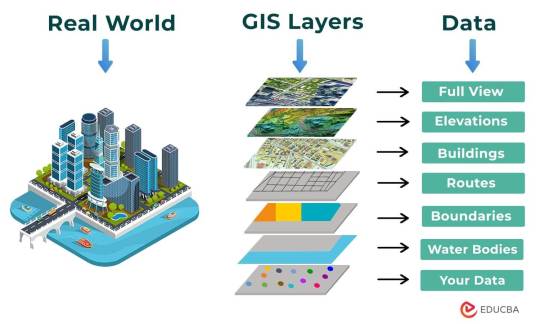
The following points elucidate the notable involvement of GIS in our daily lives:
Navigation and Location Services: GIS provides monitoring functions through the visual display of spatial data and precise geographical positioning of monitored vehicles, whereas GPS provides accurate, clear, and precise information on the position and navigation of a monitored or tracked vehicle in real-time and at the exact location.GIS is at the core of navigation applications and location-based services on smartphones. It enables accurate mapping, real-time navigation, and geolocation services, assisting individuals in finding locations, planning routes, and navigating unfamiliar areas.
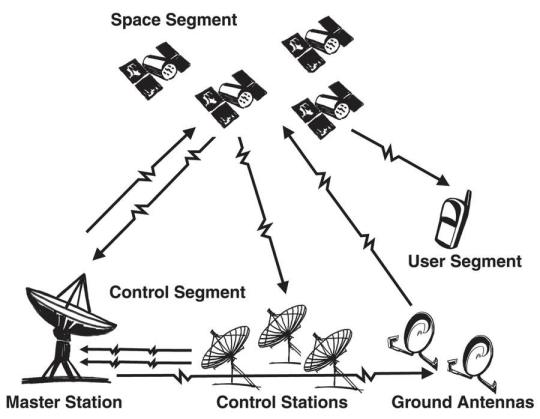
E-Commerce and Delivery Services: GIS software is a powerful tool for supply chain network planning. It helps determine the optimal location for distribution centers, warehouses, or other supply facilities. GIS is utilized in logistics and delivery services for optimizing routes, tracking shipments, and ensuring timely deliveries. E-commerce platforms leverage GIS to enhance the efficiency of their supply chain and last-mile delivery processes.
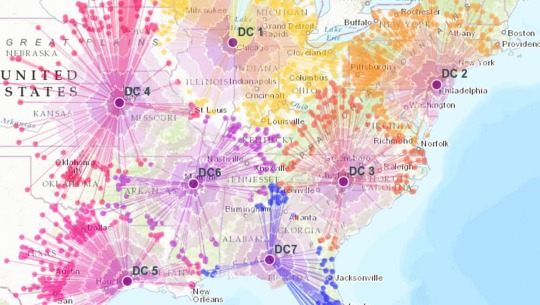
Weather Forecasting and Disaster Management: Many states are using GIS dashboard to monitor the rainfall across the state, on a real-time basis, from the data shared by rain sensors installed at various locationsGIS plays a crucial role in weather forecasting and disaster management. It assists meteorologists in analyzing spatial data, predicting weather patterns, and facilitating timely responses to natural disasters by mapping affected areas and coordinating emergency services.
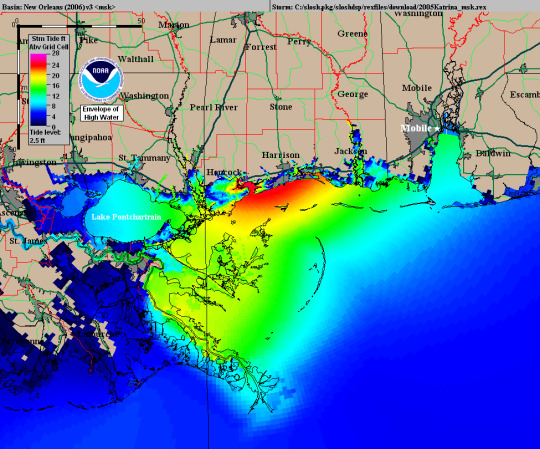
Healthcare Planning and Disease Monitoring: Geographic Information Systems enable the visualization and monitoring of infectious diseases. Additionally GIS records and displays the necessary information that health care needs of the community as well as the available resources and materials. GIS supports public health initiatives by mapping the spread of diseases, analyzing healthcare resource distribution, and assisting in the planning of vaccination campaigns. It aids in identifying high-risk areas and optimizing healthcare service delivery.
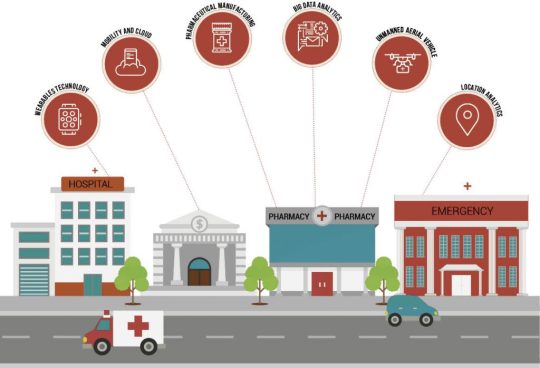
Social Media and Geo-tagging: GIS also helps in geotagging and other location related information in posts, it’s tools can map and visualize the spatial distribution of social media activity. This analysis can reveal trends, hotspots, and patterns in user engagement across different geographic areas. Many social media platforms incorporate GIS for geo-tagging, allowing users to share their location and experiences. This feature enhances social connectivity and facilitates the sharing of location-specific information.
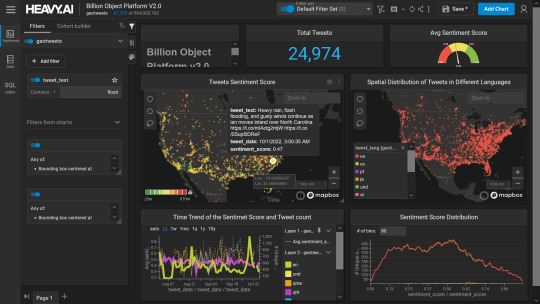
Smart City Initiatives: The Geographic Information System (GIS) offers advanced and user-friendly capabilities for Smart City projects and allows to capture, store and manipulate, analyze and visualize spatially referenced data. It is used for spatial analysis and modeling. It is the cornerstone of smart city planning, enabling the integration of data for efficient urban management. It supports initiatives related to traffic management, waste disposal, energy consumption, and overall infrastructure development.
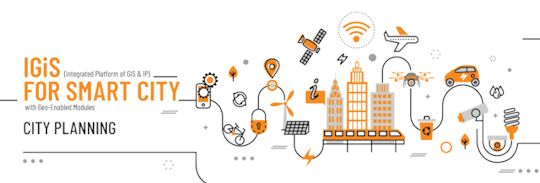
Education and Research: GIS is increasingly utilized in education and research for visualizing and analyzing spatial data. It enables students and researchers to explore geographic relationships, conduct field studies, and enhance their understanding of various subjects.

Agricultural Management and Precision Farming: Farmers leverage GIS to optimize agricultural practices by analyzing soil conditions, crop health, and weather patterns. Precision farming techniques, facilitated by GIS, contribute to increased crop yields and sustainable farming practices.
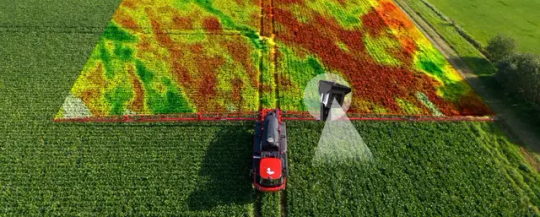
Real Estate and Property Management: In the real estate sector, GIS aids in property mapping, land valuation, and site selection. It provides real estate professionals with valuable insights into spatial relationships, market trends, and optimal development opportunities.
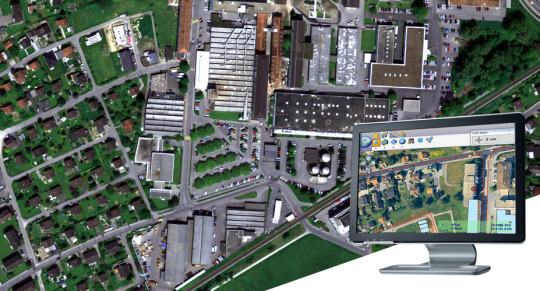
Tourism and Recreation: GIS enhances the tourism industry by providing interactive maps, route planning, and location-based information. It assists tourists in exploring destinations, finding attractions, and navigating efficiently.
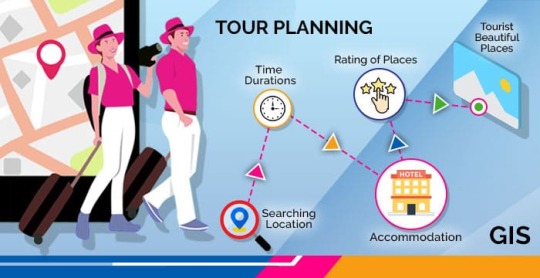
The broad and varied involvement of GIS in our daily lives underscores its significance as a technology that not only facilitates geographic data analysis but also contributes to the efficiency, safety, and interconnectedness of modern society. As GIS applications continue to evolve, their impact on daily activities is expected to further expand and refine.
#gis#architectdesign#architecture#city#education#geographic information system(gis)#geographical indication
14 notes
·
View notes
Text
New APIs For Amazon Location Service Routes, Places & Maps

Introducing new Routes, Places, and Maps APIs for Amazon Location Service
The Routes, Places, and Maps features are expanded and improved by the 17 new and improved APIs that Amazon Location Service announced today, giving developers a more unified and efficient experience. These improvements increase the accessibility and utility of Amazon Location Service for a variety of applications by bringing new capabilities and providing a smooth migration process.
Advanced route optimization, GPS tracing, toll cost calculations, a range of map styles with static and dynamic rendering options, proximity-based search, predictive recommendations, and rich, detailed information on points of interest are all now available.
At Amazon, user feedback informs the great majority of its roadmaps. When working with location-based data, several customers developing applications with Amazon Location Service have expressed that they require more specific information, like contact details and business hours, as well as specially designed APIs. Developers have indicated a desire for further features, like comprehensive route planning, proximity-based searches, more place details, and static map graphics, even if the present API set has given many users useful tools. These needs are met by these new APIs, which offer a more thorough and unconventional location solution.
Improved and new capabilities
In direct response to your feedback, today’s launch provides seven completely new APIs and ten revised APIs. Specific improvements are made to each service Maps, Places, and Routes to accommodate a wider variety of use cases.
Routes
Advanced route planning and modification features are now available through the Amazon Location Routes API, enabling customers to:
Determine service regions within a certain travel time or distance by calculating isolines.
OptimizeWaypoints helps save trip time or distance by identifying the most effective waypoint sequence.
To offer accurate cost estimates for routes involving toll roads, compute toll costs.
SnapToRoads allows GPS traces to be precisely matched by snapping sites to the road network.
You may create more dynamic and accurate route experiences for your consumers with these features. For instance, a logistics firm may minimize delivery travel expenses by optimizing driver routes in real-time while accounting for real-time traffic.
Maps
More specially designed map types created by talented cartographers are now available in the revised Amazon Location Maps API. These map styles provide expert designs that remove the need for custom map construction and speed up time to market. Furthermore, developers can incorporate static maps into applications using the Static Map Image feature, which eliminates the requirement for constant data streaming and boosts performance in use scenarios when interactivity is not required.
Among the Maps API’s primary features are:
GetStyleDescriptor, which returns details about the style; GetTile, which downloads a tile from a tileset with a given X, Y, and Z axis values
GetStaticMap allows non-interactive maps to be rendered for reporting or display.
Places
In response to requests for more granularity in location data, the Amazon Location Places API has been improved to enable more thorough search capabilities. Among the new capabilities are:
For improved user experiences, SearchNearby and Autocomplete allow predictive text features and support proximity-based queries.
Improved company information including sections for contact details, business hours, and extra features for sites of interest
Applications like food delivery services or shop apps, where customers require comprehensive information about nearby locations, will particularly benefit from these functionalities. Consider a scenario in which a consumer launches a food delivery app, uses SearchNearby to find restaurants in their area, and downloads restaurant information, including contact details and business hours, to verify availability. The application utilizes OptimizeWaypoints to recommend the most effective route for pickups and deliveries after a driver has been assigned several delivery orders. SnaptoRoads improves the customer’s real-time tracking experience by providing a detailed depiction of the driver’s location as they follow the route.
The operation of enhanced location service
It is simple to call the API. You have three options: the basic REST API, one of AWS SDKs, or the AWS Command Line Interface (AWS CLI). However, some further preparation is needed to display the data on a map in a web or mobile application. Despite having extensive documentation, the method is too intricate to go into detail here.
There are two methods for authenticating API requests with Amazon Location Service: using API keys or AWS API authentication (AWS Sigv4 authentication). For developers of mobile applications, API keys may be more practical in situations where end users are not verified or when integrating with Amazon Cognito is not practical. For front-end apps, this is the suggested authentication technique.
You utilize a combination of the AWS CLI, cURL, and a graphical REST API client to show the flexibility of the APIs and how simple it is to integrate them inside your apps.
Beginning
Amazon Location Service provides a more complete range of mapping and location data for your business needs with these updated and new APIs. These will improve the scalability and agility of developers, which will help you speed up your development lifecycle.
Explore the most recent version of the Amazon Location Service Developer Guide to get started, then start incorporating these features right now. You can also test the APIs using your preferred AWS SDKs to see how they can improve your apps.
Amazon location service pricing
Learn about the reasonable prices for maps, locations, routing, tracking, and geofencing offered by Amazon Location Service. Pay only for what you use; there are no up-front fees.
Pricing
You pay for the queries your application makes to the service listed in the table below after using the Amazon Location Service for free.
Volume discounts are available for customers with a monthly usage exceeding $5,000.
Price may vary based on request parameters, please refer to the Pricing section in the developer guide.
Amazon Location Service free trail
During the first three months of using Amazon Location Service, you can test it out with the free trial. You won’t be charged for monthly consumption during that period up to the amounts specified for the APIs indicated in the table below. You will be charged for the extra usage in accordance with the paid tier prices if your usage surpasses the free trial limits or utilizes Advanced, Premium, or Stored services.
Read more on Govindhtech.com
#APIs#AmazonLocationService#Maps#MapsAPIs#GPS#AWSAPI#SearchNearby#News#Technews#Technology#Technologynews#Technologytrends#govindhtech
2 notes
·
View notes
Text
My Dream Role as an Environmental Interpreter
Growing up, I loved opportunities to go on camping trips to various provincial parks in Ontario. I remember visiting Balsam Lake, Sibbald Point, Six Mile Lake, Killbear and Wasaga Beach Provincial Park. I loved exploring these natural areas and discovering new landscapes and environments within Ontario.
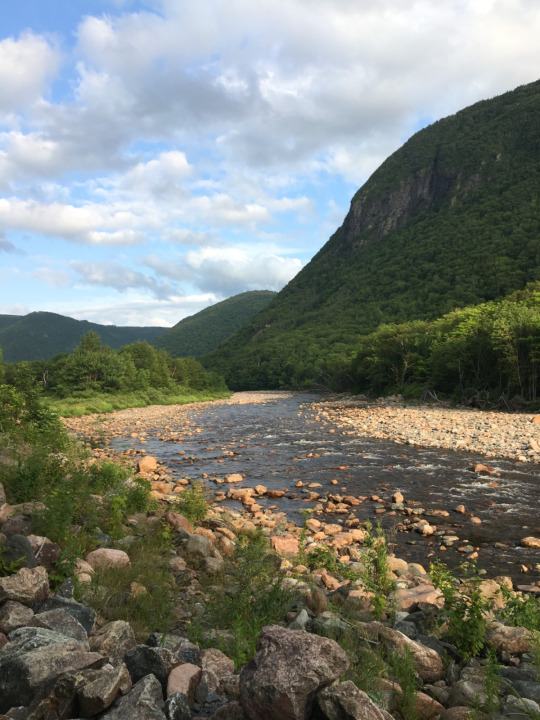
A picture I took at Cape Breton Highlands National Park in Nova Scotia.
My ideal role as an environmental interpreter would be as a park interpreter at a provincial or national park within Canada. My role as park interpreter would involve assisting visitors to explore park trails and swimming areas while providing informational programs safely and respectfully. I would love to run programs such as nature journaling, biodiversity hikes or games such as Wolf Prowl which allows kids to take on roles as animals in an ecosystem. I would also like to help run evening programs that permit visitors to safely explore the trails in the dark which they might not do on their own. As a park interpreter, I would like to focus some programs on establishing people's relationships with nature and sustainability.
The job of an environmental interpreter would require a variety of skills to deliver effective and meaningful interpretation. The skills I first thought of included plant and animal identification and knowledge of ecology, geology, and environmental stewardship. Additional skills in mapping, GPS, and first aid would also be crucial in a role as a park interpreter. Skills in these areas will allow me to be a reliable source of information that visitors can trust with their questions regarding the natural heritage of conservation areas. These areas of knowledge and skills I have listed are essential for environmental interpretation, however, I do not think they are the most important.

A picture I took of a Japanese beetle (Popillia japonica) on a hike on the Brook Trail in Uxbridge.
Before having the opportunity to work in outdoor education and to read the textbook, Interpreting Cultural and Natural Heritage: For A Better World, I thought knowledge of the environment would be the most important skill to have as an interpreter. However, you could have all the knowledge of nature possible but if you cannot communicate with individuals then you will not be able to effectively share the beauty of nature with others. As described by Beck et al. (2019), communication is the core of cultural and natural interpretation.
In an environmental interpreter role, I would need to be skilled in applying different learning theories and styles to communicate natural surroundings to a diverse group of people. Having the ability to use the Cognitive Development Theory through numerous interpretation forums will allow me to interact with different age groups (Beck et al., 2019). Also, having skills working with multiple intelligences will allow me to connect with a variety of people who learn in different ways (Beck et al., 2019).
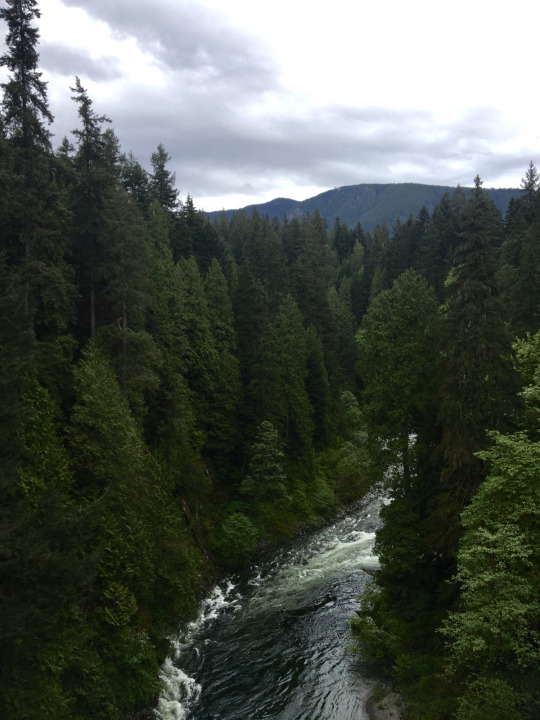
A photograph I took in British Columbia at a Natural heritage site.
As an outdoor education intern, I saw many kids with different interests and ways of learning. Some kids connected better to lessons involving games such as Predator-Prey where they got to run around but still learnt about ecosystem functions. Other kids preferred to explore ecosystems through nature journaling or nature photography programs. All kids were able to leave the outdoor education center with new knowledge and new feelings toward the environment through different pathways.
By utilizing my knowledge of the environment with communication and teaching skills I could succeed as an interpreter at a natural heritage site such as provincial or national parks. Communicating my understanding of different environments and sharing my passion for nature would allow me to guide people to form their own connections and ideas of nature.
References
Beck, L., Cable, T. T., & Knudson, D. M. (2019). Interpreting cultural and natural heritage: For A Better World. Sagamore Publishing.
9 notes
·
View notes
Text
Meta Geomatics Provide Licensed Land Surveyors
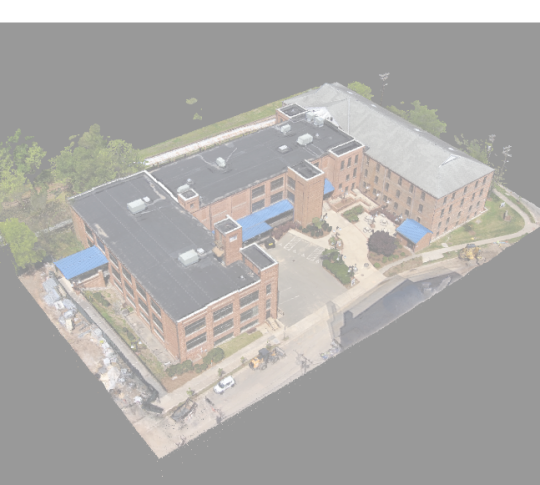
Licensed land surveyors play a crucial role in ensuring the accuracy and legality of property boundaries and land development projects. These professionals undergo rigorous training and certification processes to acquire the necessary expertise in surveying techniques, geographic information systems (GIS), and relevant laws and regulations.
Their responsibilities include measuring and mapping land parcels, determining property boundaries, and preparing detailed reports for legal and construction purposes. Licensed land utilize advanced technologies such as GPS, drones, and laser scanning to enhance the precision and efficiency of their work.
Their expertise is invaluable in various industries, including real estate, construction, urban planning, and environmental management. By adhering to professional standards and ethical guidelines, licensed land surveyors help prevent disputes over property boundaries and ensure the sustainable use of land resources.
#licensed land surveyor#local land surveyors#professional land surveyor#residential land survey#residential land surveying#construction layout#Construction survey#Boundary line survey
3 notes
·
View notes
Note
Quirk for Pizza? I'm imagining a pizza delivery minor character, but someone in that business needs to defend themself in the crazy world of Quirks!
I assume you mean Quirks about helping the user out with that and not about pizza specifically.
I see it working as an Emitter type Quirk allows the user to utilize a mental global positioning system. This can accept and memorize any form of location identifier, such as an address or coordinates, that the user looks at. The Quirk will then show the user multiple path ways to get to that point depending on what's available to them. The user can choose a path, showing how long it to take to get there and have a instructing them in a voice similar to their own updating them. The Quirk will update the user an new obstructions for their path, such as a car accident, heavy traffic, bad weather conditions, or a villain attack, and will alter the path to accommodate them. The user can pick a different route mid way through This gives the user a good utility option, able to get somewhere as quickly and safely as possible. If nothing else, it can be useful to get updates of any issues going on in the area. Aside from how limited the Quirk is in application, this does rely on the user to follow through on the path, which can prove difficult. The Quirk becomes less affective in more rural or less developed areas, like not giving as many details on the map. A possible name for the Quirk could be "GPS".
16 notes
·
View notes
Text



R-Gator (2006) by iRobot and John Deere. The R-Gator is an autonomous unmanned ground vehicle based on Deere's M-Gator, a rugged drop-zone utility vehicle. The R-Gator can autonomously carry out missions including perimeter patrol following a map or GPS waypoints, and can "follow the leader" keeping up with troops and transporting heavy gear. It can also be teleoperated or driven manually.
16 notes
·
View notes
Text
Essential Survival Gear for Every Outdoor Enthusiast: A Humorous Guide
Hey there, fellow adventurers! If you're reading this, you're either gearing up for your next epic outdoor escapade or you're just lost on the internet and thought this might be about surviving your next family reunion. Either way, welcome! Today, we're diving into the must-have survival gear that every camper, hiker, and outdoor enthusiast needs. And we’re going to have a laugh along the way. Because let’s face it, surviving in the wild is tough, but it doesn’t have to be boring!
First up, the multi-tool. This little gadget is the Swiss Army Knife's cooler, more versatile cousin. Need to open a can? Multi-tool. Got a splinter? Multi-tool. Trying to impress your friends by pretending you know how to fix that thingy on your backpack? You guessed it—multi-tool. The 14-in-1 Outdoor Emergency Survival Gear Kit from our store is the ultimate multitasker. It's got everything from a knife to a bottle opener. Yes, because sometimes survival means cracking open a cold one after a long hike.Pro Tip: Make sure you practice opening it before you hit the trail. Nothing ruins a heroic moment like struggling with your tools while your friends are watching.

The Trusty Fire Starter
Fire is essential for survival. It keeps you warm, cooks your food, and scares away the creepy crawlies that want to join your camping party. Matches? They get wet. Lighters? They run out of fuel. But a magnesium fire starter? Now we're talking. It’s like having a tiny piece of Thor's hammer in your pocket.Check out our awesome fire starter kits. They’re foolproof, which is great because the last thing you want is to be that person who can't start a fire in front of your entire camping group. "Hey, remember when Dave couldn't start a fire, and we almost froze? Good times.
"Pro Tip: Practice at home first. Your neighbors might think you’re preparing for an apocalypse, but better safe than sorry.
The Unassuming Paracord Bracelet
You might think a paracord bracelet is just a fashionable accessory for your rugged outdoor look. Wrong! This little piece of fashion can save your life. Need to tie up your gear, make a shelter, or floss after eating that jerky? Paracord bracelet to the rescue! It’s like wearing Batman’s utility belt on your wrist.Our store offers paracord bracelets that even come with a built-in fire starter and whistle. Now you can call for help and start a fire without even reaching into your pack. Talk about multi-functional!
Pro Tip: Resist the urge to use it as a regular rope for mundane tasks. Save it for when you really need it. Like when you’re about to fall into a ravine. Or need to make an emergency clothesline.
The Legendary First Aid Kit
Getting a blister is not a rite of passage; it's just plain annoying. A first aid kit is the real MVP of any outdoor adventure. Cuts, scrapes, blisters, mysterious rashes—you name it, your first aid kit can handle it. Our kits are compact, comprehensive, and fit perfectly in your backpack without taking up too much space.And let’s be honest, nothing says "I’m prepared" like busting out a first aid kit when your buddy gets a paper cut from the map (yes, people still use maps).
Pro Tip: Don’t just carry it—know how to use it. Otherwise, it’s just extra weight. Maybe take a first aid class. You might even meet someone who shares your love for survival gear!

The All-Knowing Compass
GPS devices are great until they run out of battery or lose signal. A compass, however, is like the wise old owl of navigation tools. It doesn’t need batteries, it doesn’t glitch, and it won’t judge you for not knowing north from south.Our store has top-notch compasses that are easy to read and reliable. Perfect for when you’ve wandered off the beaten path and are starting to worry about becoming the next headline: "Lost Hiker Found Using Only a Selfie Stick and a Sense of Desperation.
"Pro Tip: Learn to use it properly. Or at least pretend you do while sneakily using your GPS as backup.

Wrapping It Up!
So there you have it, folks. The essential survival gear that every outdoor enthusiast needs. Remember, it’s not just about having the right tools; it’s about knowing how to use them and keeping a sense of humor when things go sideways. Because in the end, the best survival skill is the ability to laugh in the face of adversity (and your friends’ attempts at starting a campfire). Check out Survival Pro Store for all your gear needs, and may your adventures be epic and your blisters be few!
Happy Trails!
4 notes
·
View notes
Text
What is a Land Survey and What are the Types of Surveys?
Land surveys are vital tools in the realm of real estate, construction, and land development. They serve as the foundational blueprint for understanding and utilizing pieces of land effectively. A land survey involves the precise measurement and mapping of a property's boundaries, topography, and features. These surveys are conducted by licensed land surveyors who employ various techniques to provide accurate and reliable data. Let's delve into the world of land surveys and explore the different types that cater to diverse needs.

What is a Land Survey?
At its core, a land survey is a detailed examination and measurement of a property's dimensions and characteristics. The primary objective is to determine boundaries, identify features, and document the topography. This information is crucial for property owners, developers, and government agencies to make informed decisions about land use, construction, and legal matters.
Types of Land Surveys:
Boundary Surveys:
Purpose: Establishing accurate property lines.
Process: Surveyors use various tools like GPS, theodolites, and total stations to measure and demarcate property boundaries precisely. This type of survey helps prevent boundary disputes among neighbors.
Topographic Surveys:
Purpose: Mapping the natural and man-made features of a property.
Process: Surveyors identify and measure contours, elevations, trees, buildings, and other significant features. This information is crucial for designing infrastructure, drainage systems, and landscaping.
ALTA/NSPS Surveys:
Purpose: Complying with the American Land Title Association/National Society of Professional Surveyors standards for commercial transactions.
Process: These surveys provide a comprehensive overview of a property's boundaries, improvements, easements, and other relevant details. They are often required for real estate transactions to ensure all parties have a clear understanding of the property.
Construction Surveys:
Purpose: Facilitating the construction process.
Process: Surveyors work closely with construction teams to stake out reference points, verify dimensions, and ensure that the construction aligns with the design plans. Construction surveys are essential for accuracy and adherence to specifications.
Floodplain Surveys:
Purpose: Assessing flood risks and compliance with floodplain regulations.
Process: Surveyors determine the elevation of land and structures in relation to established floodplain levels. This information is vital for insurance purposes and ensuring that developments comply with floodplain management regulations.
Subdivision Surveys:
Purpose: Dividing a large tract of land into smaller lots.
Process: Surveyors create legal descriptions and maps that define the boundaries of individual lots within a larger property. This facilitates the sale or development of smaller parcels.
Conclusion:
Land surveys play a pivotal role in responsible land management and development. Whether for legal clarity, construction precision, or environmental compliance, these surveys provide the foundational data needed to make informed decisions about land use. As technology continues to advance, the field of land surveying evolves, ensuring that these critical tools remain accurate and indispensable in shaping our built environment.
6 notes
·
View notes
Text
Global Geospatial Analytics Market – $33B (2024) to $56B by 2029, 11.1% CAGR
Segmentation Overview The geospatial analytics market is segmented by:
Type: Surface & field analytics; Geovisualization; Network analysis; Artificial neural networks; Others
Technology: Remote sensing; GPS; GIS; Others
Solutions: Geocoding & reverse geocoding; Reporting & visualization; Thematic mapping & spatial analysis; Data integration & ETL; Others
Applications: Surveying; Disaster risk reduction & management; Medicine & public safety; Climate change adaptation; Predictive asset management; Others
End-Users: Agriculture; Defense & intelligence; Utilities & communication; Automotive; Government; Travel & logistics; Others
Regions: North America; Latin America; Europe; Asia-Pacific; Middle East & Africa To buy the report, click on https://www.datamintelligence.com/buy-now-page?report=geospatial-analytics-market
Market Size & Forecast
The global geospatial analytics market is projected to expand at a CAGR of 12.8% between 2024 and 2031.
Other projections estimate market growth from USD 32.97 billion in 2024 to USD 55.75 billion by 2029.
A broader estimate values the market at USD 114.3 billion in 2024, expected to reach over USD 226.5 billion by 2030.
Introduction & Definition
Geospatial analytics is the process of gathering, interpreting, and visualizing location-based data—drawn from satellites, GPS, mobile devices, sensors, and social media—using GIS, AI, and computer vision. This powerful fusion helps governments and businesses gain real-time insights into transportation, urban planning, agriculture, disaster response, defense, utilities, and logistics.
Market Drivers & Restraints
Key Drivers:
Smart City Expansion: The proliferation of IoT sensors and connected devices in urban infrastructure drives demand for spatial analytics to manage traffic, utilities, public safety, and emergency planning.
Technological Integration: Advances in AI, 5G, satellite imaging, and edge computing enable high-resolution, real-time spatial decision-making.
Enterprise Adoption: Widespread demand for location intelligence across sectors—such as agriculture, defense, utilities, transportation, and retail—boosts comprehensive geospatial integration.
Restraints:
Privacy & Security: Handling sensitive spatial data raises concerns over surveillance, data protection, and regulatory compliance.
Data Complexity: Integrating varied data sources—maps, sensors, satellite imagery—remains a challenge due to formatting and standardization issues.
Cost & Skills Gap: High initial investment and talent shortages for GIS and AI expertise hinder full-scale adoption.
Segmentation Analysis
By Type: Surface & field analytics lead due to applications in topography, hydrology, and asset monitoring. Geovisualization supports urban planning and stakeholder communication.
By Technology: GIS dominates software solutions; GPS and remote sensing—particularly LiDAR, radar, and GNSS—are key data capture technologies.
By Solutions: Thematic mapping and ETL tools are in high demand for data-driven decisions across utilities, logistics, and infrastructure.
By Applications: Surveying, disaster mitigation, climate adaptation, asset management, medicine, and public safety are major application fields.
By End-Users: Agriculture (precision farming), defense (geospatial intelligence), utilities, transportation, government services, and logistics are top verticals.To get a free sample report, click on https://www.datamintelligence.com/download-sample/geospatial-analytics-market
Geographical Insights
North America: Holds the largest market share (~34% in 2024), driven by government and defense investments, smart cities, and GIS adoption.
Europe: Adoption spans from transport and delivery logistics to environmental tracking; EU programs boost earth observation and AI integration.
Asia-Pacific: Fastest-growing region due to rapid urbanization and expansion in countries like China, India, and Japan.
Middle East & Africa: High growth supported by smart city initiatives and infrastructure investments.
Recent Trends or News
AI-Embedded Spatial Tools: Major GIS platforms are embedding AI and machine learning for predictive analysis.
Mobile Mapping & 3D Scanning: Use of LiDAR-equipped vehicles and drones is increasing rapidly in infrastructure and mapping applications.
Pandemic & Disaster Applications: The pandemic accelerated use of geospatial analytics for vaccine distribution, health mapping, and crisis response.
Competitive Landscape
Leading companies in the geospatial analytics market include:
Microsoft
Google
General Electric (GE)
SAP
Salesforce
Precisely
Oracle
RMSI
OmniSci
Maxar Technologies
Hexagon AB
TomTom
Trimble
Esri
CARTO
Orbital Insight
These companies lead through AI-powered tools, cloud-native GIS, satellite imagery, mobile solutions, and strategic acquisitions.
Impact Analysis
Economic Impact: Geospatial analytics streamlines operations—optimizing routes, reducing resource wastage, and enhancing project ROI.
Environmental Impact: Unlocks data for spatial monitoring—supporting climate modeling, land-use mapping, environmental compliance, and disaster mitigation.
Social Impact: Shapes public health response systems, emergency services, and urban planning, while challenging privacy norms.
Technological Impact: Drives growth in cloud GIS, AI-engineered mapping, real-time analytics, and sensor networks, enabling scalable spatial insights.
Key Developments
GeoAnalytics Engine by Esri: An AI-integrated GIS platform for advanced spatial querying and real-time analytics.
Hexagon Captura Launch: Optical sensor-based system enhancing spatial measurement precision.
CADLM Acquisition by Hexagon: Adds simulation and reliability modeling for enhanced engineering workflows.
Orbital Insight Growth: Enhances satellite-based analytics capabilities through new partnerships and investment.
Report Features & Coverage
This market report includes:
Global and regional market sizing (2018–2024) with forecasts to 2031
In-depth segmentation by type, technology, solution, application, industry, and region
Competitive landscape with company profiling
Key trends, opportunities, and growth challenges
SWOT analysis, Porter’s Five Forces, and market attractiveness index
Recent innovations and investment updates
About Us
We are a global market intelligence firm committed to delivering in-depth insights across emerging technologies. Our expertise in geospatial analytics helps clients unlock data-driven innovation, streamline operations, and improve strategic planning across industries. We provide accurate forecasting, custom reports, and actionable guidance tailored to enterprise and government needs.
Contact Us
Email: [email protected]
Phone: +1 877 441 4866
0 notes
Text
Redefining Aerial Experience: Aebocode Technologies as a Leading FPV Drone Manufacturer in India
In the rapidly evolving world of drone technology, one segment that’s capturing the imagination of tech enthusiasts, filmmakers, racers, and engineers alike is FPV (First Person View) drones. Unlike traditional drones used for mapping or surveillance, FPV drones offer an immersive, high-speed flying experience—streaming live video from the drone to a headset or screen, giving users the sensation of sitting in the cockpit.

Among the growing number of innovators in this space, Aebocode Technologies stands out as a pioneering FPV drone manufacturer in India, combining indigenous innovation, quality components, and performance engineering to reshape how India approaches drone racing, cinematography, and training.
What Makes FPV Drones Unique?
FPV drones are agile, fast, and responsive—built for speed, maneuverability, and real-time control. Unlike GPS-stabilized drones, they’re typically flown manually using radio controllers and video goggles, allowing pilots to race through tight spaces or capture dramatic cinematic sequences. They’re widely used in:
Drone racing leagues
Freestyle flying and acrobatics
Cinematic shots for films and commercials
Industrial inspection in hard-to-reach areas
Training and simulation for UAV pilots
This blend of utility and excitement is driving FPV drone demand not just globally, but in India—across hobbyist, entertainment, and commercial sectors.
Why India Needs Indigenous FPV Drone Manufacturers
India’s drone industry has seen explosive growth since the liberalization of drone policies under the 2021 Drone Rules. However, when it comes to FPV drones, most hobbyists and filmmakers still rely on expensive imports—leading to high costs, limited customization, and longer delivery times.
Enter Aebocode Technologies—a forward-looking FPV drone manufacturer in India filling this critical gap. With local R&D, high-quality builds, and competitive pricing, Aebocode is helping democratize FPV technology for Indian users—from college drone clubs to Bollywood cinematographers.
Aebocode’s FPV Drone Lineup: Designed for Speed and Precision
Aebocode has engineered a range of FPV drones tailored to different use cases and skill levels. Some of the highlights include:
1. Racing Series
Built for speed and agility, these lightweight quadcopters come with brushless motors, carbon fiber frames, and advanced flight controllers. Capable of reaching speeds over 100 km/h, they’re ideal for drone racing events and freestyle pilots.
2. Cinematic FPV Series
Equipped with stabilized mounts for GoPro or mirrorless cameras, these drones provide buttery-smooth footage for filmmakers and content creators. Whether flying through narrow corridors or chasing a speeding car, these drones deliver immersive shots with zero post-stabilization.
3. Training & DIY Kits
For beginners and educational institutions, Aebocode offers ready-to-fly kits and build-your-own FPV drone kits. These are modular, repairable, and perfect for learning the art of FPV flying and maintenance.
Each of these product lines reflects Aebocode’s commitment to quality, affordability, and customization—traits that define a leading FPV drone manufacturer in India.
Cutting-Edge Technology Inside Every Aebocode FPV Drone
What sets Aebocode apart from generic or imported FPV drones is the integration of premium components and smart engineering:
High-Definition FPV Camera Modules: Transmit ultra-low latency live video.
Digital and Analog Video Transmission Options: Compatible with systems like DJI FPV, HDZero, and traditional analog VTX.
Powerful Flight Controllers (F7, F405, etc.): For precise handling and customization via Betaflight or INAV.
Modular Designs: Easy to repair and upgrade, ensuring long-term usability.
Lightweight Carbon Fiber Frames: Designed to withstand high-impact crashes during racing or freestyle flying.
Whether it's durability, performance, or repairability, Aebocode ensures every model meets the standards of both professionals and enthusiasts.
Empowering India’s Drone Ecosystem
Aebocode is more than just an FPV drone manufacturer in India—it’s a knowledge hub. Through collaborations with universities, drone training academies, and government-backed innovation labs, Aebocode is helping nurture the next generation of drone pilots and engineers.
They offer:
FPV Pilot Training Programs
Workshops on Drone Assembly & Tuning
Drone Racing League Partnerships
Certification Courses in FPV Flight Dynamics
By promoting skill development, Aebocode ensures that India not only uses drones but builds and innovates them right from the ground up.
Applications of FPV Drones in India: Beyond Hobby Flying
While many associate FPV drones with racing or YouTube videos, they have increasing commercial utility:
Cinematography: Capturing tight indoor or high-speed outdoor shots.
Real Estate Marketing: Virtual fly-throughs of properties.
Infrastructure Inspections: FPV drones can reach under bridges or inside pipes.
Disaster Response: Navigating tight spaces after earthquakes or building collapses.
Military & Police Training: Simulating urban combat or surveillance missions.
By offering drones suited for these scenarios, Aebocode strengthens its position as a trusted FPV drone manufacturer in India serving both fun and functional needs.
What’s Next for Aebocode Technologies?
Aebocode’s roadmap includes:
In-house FPV camera development
AI-assisted stabilization systems
Long-range HD FPV transmission tech
Dedicated FPV drone simulators and gamified training modules
With rising participation in global drone racing competitions and increasing demand from production houses, the timing couldn’t be better for a homegrown brand to lead. Aebocode is well-positioned to become not just a top FPV drone manufacturer in India, but a global competitor.
Conclusion: The Sky Isn’t the Limit—It’s Just the Beginning
India’s drone industry is entering an era where innovation meets action, and FPV drones are the next frontier. From thrilling races and jaw-dropping video shots to industrial inspections and rescue missions, FPV drones are expanding what’s possible with aerial tech.
With its commitment to quality, affordability, and homegrown innovation, Aebocode Technologies has earned its place as a standout FPV drone manufacturer in India. For anyone looking to experience the thrill of immersive flight—or deploy agile drones for cutting-edge applications—Aebocode offers a flying start.
#drones uav#fire fighting uav#firefighting drones#fighting drone#fixedwingdrone#cargodrones#drones#firedrone#drone#fpv drones
0 notes
Text
Navigate Your World: Exploring Infiniti's Navigation Radio Systems
For Infiniti owners, the drive isn't just about getting from point A to point B; it's about the experience. And a crucial part of that experience is often a seamless, intuitive navigation system. While modern smartphones offer incredible mapping capabilities, there's still a significant advantage to an integrated navigation radio specifically designed for your Infiniti.
But what exactly does an Infiniti navigation radio entail, and why might it be the ideal co-pilot for your journeys? Let's dive in.
More Than Just Directions: The Core of Infiniti's Navigation Radio
At its heart, an Infiniti navigation radio is an infotainment system that combines GPS navigation with audio and other vehicle functions. Unlike a standalone GPS unit or your phone, it's deeply integrated into your car's electrical architecture and dashboard design. This means:
Seamless Display: Directions are displayed prominently on a large, high-resolution screen, often in the center console, making them easy to read at a glance without having to take your eyes far from the road.
Integrated Audio: The navigation system works in harmony with your car's audio system, allowing for voice prompts to be heard clearly over your music or radio, and often muting or lowering the volume automatically when directions are spoken.
Intuitive Controls: You'll typically find dedicated buttons, touch screen controls, or even voice commands that are familiar and easy to use, minimizing distraction while driving.
Vehicle Data Integration: Depending on the model and year, the navigation system might integrate with other vehicle data, such as speed limits, traffic information (often through subscription services), and points of interest specific to your car's capabilities.
Aesthetic Integration: A factory or high-quality aftermarket navigation radio is designed to blend seamlessly with your Infiniti's interior, maintaining its luxurious feel and design.
Why Choose an Integrated Navigation Radio for Your Infiniti?
While phone apps are convenient, there are several compelling reasons why many Infiniti owners still prefer a dedicated navigation radio:
Reliability in Remote Areas: Unlike phone apps that rely on cellular data, an integrated GPS system uses satellite signals, meaning you'll get reliable directions even in areas with poor or no cell service – perfect for those adventurous road trips off the beaten path.
Safety and Convenience: Having the map directly on your dashboard means less fumbling with your phone, fewer distractions, and generally a safer driving experience. Voice commands further enhance this.
Enhanced Audio Experience: Many Infiniti navigation radios are part of a premium audio package, offering superior sound quality and advanced features.
Resale Value: A fully functional, integrated navigation system can add to the resale value of your Infiniti.
Tailored for Infiniti: These systems are designed with your specific Infiniti model in mind, ensuring optimal performance and compatibility with other vehicle features.
Considerations for Infiniti Owners
If you're looking to upgrade or utilize the navigation radio in your Infiniti, here are a few things to keep in mind:
Factory vs. Aftermarket: While factory units offer perfect integration, high-quality aftermarket options can provide more advanced features, updated maps, and sometimes even a more modern interface. Research thoroughly to ensure compatibility and reliability.
Map Updates: Navigation systems rely on up-to-date map data. Check with your Infiniti dealership or the manufacturer of your aftermarket system about how to get the latest map updates to ensure accuracy.
Features: Modern navigation radios often come with a host of features like real-time traffic updates, voice recognition, Bluetooth connectivity, Apple CarPlay/Android Auto integration, and even built-in apps. Consider what features are most important to you.
Professional Installation: For aftermarket units, professional installation is highly recommended to ensure proper wiring, functionality, and integration with your vehicle's existing systems.
Whether you're exploring new cities or simply navigating your daily commute, an integrated navigation radio in your Infiniti offers a blend of convenience, safety, and sophisticated technology that enhances every drive. It's not just about finding your way; it's about enjoying the journey.
0 notes
Text

How Data Science is Helping Fight Climate Change
Climate change is no longer a distant threat—it’s a reality affecting ecosystems, economies, and everyday lives. From rising sea levels to extreme weather events, the impact is global. But there’s a powerful tool helping scientists, policymakers, and activists respond more effectively: Data Science.
With the explosion of big data, sensors, satellites, and machine learning algorithms, data science is becoming a central force in the fight against climate change. Let’s explore how.
1. Predicting Climate Patterns with Machine Learning
One of the most powerful applications of data science is in climate modeling and forecasting. Traditional models were limited in processing power and granularity. Now, with advanced machine learning techniques and high-performance computing, scientists can:
Simulate climate changes decades into the future
Predict weather patterns more accurately
Model extreme events like hurricanes, floods, or droughts
For example, DeepMind’s AI model, trained on vast datasets of radar data, can now predict rainfall with higher precision than traditional methods. These forecasts help communities prepare for disasters and reduce damage.
2. Satellite Imagery and Earth Observation
Satellites continuously gather images and climate data from space. These images are rich with information—about deforestation, glacier melting, ocean temperatures, and more.
Data scientists use image recognition and geospatial analytics to:
Monitor forest cover loss in the Amazon
Track ice sheet melting in Antarctica
Identify urban heat islands in growing cities
Measure carbon emissions from industrial zones
Organizations like NASA, ESA, and Google Earth Engine are publishing petabytes of open climate data for researchers to build models, apps, and solutions.
3. Carbon Footprint Analysis
Governments and companies are under increasing pressure to reduce their carbon footprints. But first, they need to measure them accurately.
Data science enables:
Carbon accounting across supply chains
IoT integration in factories for real-time emission tracking
Predictive models to simulate the impact of green policies
For instance, companies like Microsoft and Apple are using advanced analytics to reduce their net carbon emissions and optimize energy use across data centers.
4. Climate-Smart Agriculture
Agriculture is both a victim and a contributor to climate change. Data science is helping farmers adapt through climate-smart agriculture practices:
Yield prediction using historical and weather data
Soil health monitoring through sensors and analytics
Pest and disease detection using AI-driven image classification
Precision irrigation to reduce water usage
Platforms like IBM’s Watson Decision Platform for Agriculture use AI to give farmers insights that boost productivity while reducing environmental impact.
5. Greener Cities with Smart Data
Urban areas contribute heavily to CO₂ emissions. With smart data collected from sensors, traffic cams, GPS, and public utilities, data scientists help cities become more sustainable:
Optimizing public transport to reduce fuel consumption
Monitoring air quality in real-time
Planning green spaces using heat maps
Managing waste and recycling more efficiently
Cities like Singapore, Amsterdam, and San Francisco are already leading the way in becoming “smart cities,” using data science to reduce emissions and improve quality of life.
6. Renewable Energy Optimization
The shift to solar, wind, and hydro power brings new challenges: fluctuating outputs, grid integration, and energy storage. Here’s where data science steps in:
Forecasting sunlight and wind speeds to predict energy generation
Optimizing battery storage and distribution
Balancing supply and demand across the smart grid
AI models from companies like Google DeepMind have already improved the output prediction of wind farms by up to 20%.
7. Climate Research and Citizen Science
Open-source projects and platforms allow anyone to contribute to climate research. Data scientists use crowd-sourced data to:
Map plastic waste in oceans
Collect wildlife migration data
Record local temperature anomalies
Tools like Zooniverse, Kaggle, and Climate Central invite data scientists and enthusiasts to work on real-world climate datasets and challenges.
8. Policy and Decision-Making Support
Data science doesn't just help collect and analyze data—it also helps governments make better decisions.
Predictive models simulate the outcome of climate policies
Visualization tools make complex data easier for decision-makers to understand
Data-driven reports guide investments in green technologies
The Intergovernmental Panel on Climate Change (IPCC), for example, uses advanced data analytics to build global climate reports that influence international treaties and agreements.
Challenges and Ethical Considerations
While data science offers powerful tools, it also comes with challenges:
Data privacy in sensor-based tracking
Biases in datasets or algorithms
Digital divide, where developing countries may lack infrastructure for data collection
Data scientists must follow ethical guidelines and ensure inclusive, transparent, and responsible use of technology in climate work.
Conclusion: The Role of Data Scientists in a Greener Future
Climate change is a complex, urgent problem—but data science gives us the power to understand, predict, and act.
As a data scientist, you're not just crunching numbers. You're helping to:
Save forests
Reduce emissions
Optimize energy use
Protect communities
Shape global policies
It’s a field where technology meets responsibility. And in the climate battle, every line of clean, purposeful code matters.
#datascience#climatechange#machinelearning#ai#bigdata#sustainability#environmentaldata#greenai#smartcities#carbonfootprint#renewableenergy#earthobservation#climatemodeling#iot#geospatialanalytics#climateaction#cleantech#techforgood#datascienceforclimate#nschool academy
0 notes
Text
Thompson Trenchless and Hydro Jetting Sets New Standard for Trenchless Sewer and Hydro Jetting Services in Wyandotte, MI
News Distribution

Wyandotte, MI — June 16, 2025 — In a move that is reshaping the plumbing industry in Southeast Michigan, Thompson Trenchless and Hydro Jetting announces its full-scale expansion and strategic upgrade of its Trenchless Sewer and Hydro Jetting Services in Wyandotte, MI. As a leader in cutting-edge plumbing solutions, the company is committed to delivering precision-driven, no-dig repairs and high-powered hydro jetting backed by advanced diagnostic tools and seasoned technicians.
Industry-Leading Trenchless Sewer Services Now Available in Wyandotte, MI
For homeowners and businesses in Wyandotte facing aging infrastructure, the future of plumbing repair has arrived. Thompson Trenchless and Hydro Jetting is now providing its signature trenchless technology—Cured-in-Place Pipe (CIPP) lining, pipe patching, and pipe bursting—eliminating the need for disruptive excavation.
These no-dig solutions are ideal for replacing deteriorated sewer lines, restoring underground systems without damaging landscapes, sidewalks, or driveways. With trenchless repair, Thompson cuts both time and cost, offering long-term durability with minimal surface disruption. Whether the issue lies in residential laterals or commercial sewer mains, the company's trenchless techniques are engineered for precision and performance.
Unmatched Hydro Jetting Power to Combat Severe Blockages
Thompson's hydro jetting services have become a gold standard in drain and sewer cleaning. Utilizing pressurized water streams of up to 4,000 PSI, their systems obliterate grease buildup, root intrusions, and mineral deposits that traditional snaking simply can’t clear.
The service is particularly effective for restaurants, manufacturing facilities, and homes with recurring blockages. Hydro jetting not only clears clogs but restores pipe diameter and flow capacity—extending the lifespan of existing infrastructure.
Full Suite of Drain and Sewer Line Services for Michigan Residents

In addition to trenchless and hydro jetting services, Thompson Trenchless and Hydro Jetting offers a wide array of plumbing solutions designed to address the full lifecycle of sewer and stormwater systems. Their services include:
Drain Cleaning & Rooter Services: Rapid removal of blockages caused by soap scum, roots, and debris.
Video Camera Inspections: Real-time diagnostics to locate blockages, breaks, and root invasions with pinpoint accuracy.
Drain Inspection & Repair: Identifying early signs of pipe failure before costly replacements are needed.
Sewer Line & Excavation: When excavation is unavoidable, Thompson ensures surgical precision and site restoration.
Storm Drain Cleaning & Repair: Maintaining flow in high-volume drainage systems to prevent flooding and water damage.
Pump Replacement: Expert replacement and servicing of sump pumps and lift station pumps for both residential and commercial systems.
Drain Care Products: Environmentally safe enzymes and treatments to maintain pipe health and prevent backups.
Each service is executed by licensed professionals using advanced equipment and industry-best practices. Emergency response times are among the fastest in the region, and every project is completed with thorough post-service inspections.
Smart Solutions Through Technology-Backed Service

What sets Thompson Trenchless and Hydro Jetting apart is its investment in non-invasive technology. From fiber-optic cameras to trenchless lining rigs and GPS-based utility mapping, every tool is calibrated to reduce cost, increase accuracy, and safeguard property.
Wyandotte residents can expect a transparent process—from initial video camera inspection to final pipe rehabilitation—with detailed reports, upfront pricing, and zero guesswork.
A Local Commitment to Plumbing Excellence
Located at 1799 Oak St, Wyandotte, MI 48192, Thompson Trenchless and Hydro Jetting is a Michigan-born business built on trust, technical expertise, and a dedication to solving complex plumbing challenges without unnecessary disruption.
“Our mission has always been simple,” said the company spokesperson. “To provide the most effective, least invasive plumbing services possible. Trenchless repair and hydro jetting allow us to do exactly that—fix it fast, fix it right, and fix it without tearing up your yard.”
With a growing customer base across Downriver and Metro Detroit, Thompson is cementing its place as the go-to choice for long-lasting plumbing repairs.
Contact Thompson Trenchless and Hydro Jetting Today
Homeowners, property managers, and business owners in Wyandotte looking for reliable, advanced plumbing services can contact Thompson Trenchless and Hydro Jetting for expert solutions tailored to their exact needs.
📍 Address: 1799 Oak St, Wyandotte, MI 48192 📞 Phone: (313) 488-3834 🌐 Facebook: https://www.facebook.com/tthompsonplumbing/
About Thompson Trenchless and Hydro Jetting Thompson Trenchless and Hydro Jetting is Wyandotte’s premier provider of trenchless plumbing, hydro jetting, and advanced sewer repair services. With a customer-first mindset and a toolbox full of modern innovations, the company is redefining how plumbing problems are solved—swiftly, cleanly, and cost-effectively.
For more information, or to inquire about our services, please contact us at (313) 488-3834 or visit https://www.facebook.com/tthompsonplumbing/.
1 note
·
View note